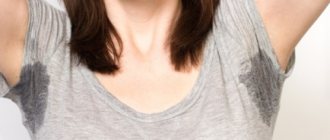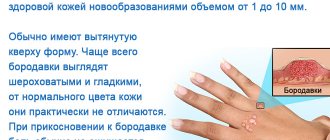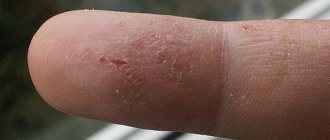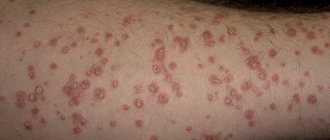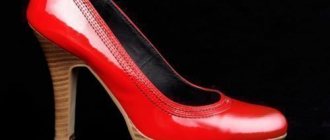The ancient Romans considered profuse sweating a sign of enviable health. However, in the modern world, the smell of sweat and stains on clothes are considered bad manners, and most importantly, they interfere with socialization. Excessive sweating is a process that is practically independent of the person himself, but there are certainly ways to solve the problem!
Palmar hyperhidrosis is sweating of the hands, namely the palms. Hyperhidrosis of the palms is sometimes an even greater cause of psychological disorders than excessive sweating in the armpits. Increased, severe sweating of the palms creates many inconveniences for a person in communication and work: fear of handshakes, fear of working with papers - only the most obvious of them. Establishing social contacts, and therefore living in society, is very difficult for a person suffering from hand hyperhidrosis.
- Functions of sweating:
- Abundant sweating reliably protects the body from overheating, and therefore allows you to withstand prolonged stress.
- The main function of sweating is to maintain normal body temperature. Hyperhidrosis is a condition when more sweat is produced than is necessary for normal thermoregulation.
Hyperhidrosis: symptoms and causes
Excessive hand sweating (palm hyperhidrosis) can be identified by the following symptoms:
- red color of palms;
- wet prints in contact with paper;
- Difficulty using writing utensils (pen, pencil) and holding slippery objects.
On a note. The key point in the treatment of hyperhidrosis is to follow a diet that involves limited consumption of spicy foods, alcohol and coffee, which promote increased sweating.
This phenomenon may be a sign of illness or an individual condition caused by the action of certain provoking factors
Excessive sweating of the feet (foot hyperhidrosis) is accompanied by a persistent unpleasant odor, causes a lot of inconvenience to a person and occurs as a result of:
- out-of-season socks and shoes;
- heredity;
- lack of proper hygiene;
- disruptions in the functioning of the nervous or cardiovascular system;
- constant anxiety and stress;
- infectious and skin diseases.
Such unpleasant symptoms, leading to difficulties in the personal and professional spheres, are a good reason to consult a doctor for medical help.
Treatment of palm hyperhidrosis
The choice of treatment tactics depends on the underlying disease. In case of endocrine disorders, the symptom is relieved by correcting the level of hormones in the blood. And for infectious diseases, it is enough to take therapy appropriate to the disease: antibiotics or antiviral drugs.
If the cause of excessive sweating is not a serious illness, but frequent stressful situations or the individual characteristics of the body, treatment is carried out symptomatically. The channels of the sweat glands can be blocked using botulinum toxin preparations. This significantly reduces the moisture level in your palms. But the procedure lasts up to 12 months, then it needs to be repeated.
Increased sweating of the palms causes inconvenience and discomfort. And this problem has a solution for each specific case. Therefore, you should not put off going to the doctor and continue to endure the inconvenience. It's time to solve problems, not suffer from them.
Read also: Sweating head
Dear patients!
Remember that only a qualified doctor can make an accurate diagnosis, determine the causes and nature of the disease, and prescribe effective treatment. You can make an appointment with our specialists or call a doctor at home by calling 8-(4822)-33-00-33 Be healthy and happy!
Diagnostics
It is not difficult for a medical professional to diagnose hyperhidrosis of the arms and legs, provided that this manifestation is not a consequence of a specific disease (for example, tuberculosis, AIDS, oncology, endocrine disorders, etc.).
The presence of hand hyperhidrosis can be assessed using the Minor test
To carry out the Minor test, the problem area of the skin is smeared with iodine and left until dry. Then sprinkle your palms with starch and wait a few more minutes. Interacting with a moist environment, iodine and starch acquire a dark shade, by which a specialist can determine the degree of manifestation of hyperhidrosis.
General information
Interestingly, in 99% of cases, a person who has problems with excessively active sweating of the hands will also actively sweat in the feet . This is due both to the peculiarities of the nervous system and to anatomical nuances. As a rule, doctors in such cases diagnose “central primary hyperhidrosis.”
The entire practice of the world's leading cosmetologists speaks of another curious circumstance: in approximately 70% of cases, such a pathology is hereditarily transmitted . So if one of your parents suffers from severe sweating, the chances are very high that you will also have this pathology. Therefore, conservative therapy, although it looks like a simple and profitable option, does not always give at least some positive effect. Still, it's worth a try. Still, medications in most cases are preferable to a surgical scalpel, and if you managed to cope with hyperhidrosis with folk remedies, that’s absolutely wonderful!
Drugs for treatment
Hyperhidrosis of the palms and feet can be cured with medication or traditional methods. For mild sweating, zinc ointment is effective.
You should use zinc ointment once a day until signs of sweating disappear completely.
Before using the drug, it is recommended to soak your hands or feet in warm water for about 10 minutes, wipe dry and apply the medicine. Then you need to put on cotton gloves (socks) for approximately 20 minutes. Upon completion of the procedure, be sure to rinse off any remaining product to avoid irritation.
For your information. The most convenient and easiest to use means against sweating of the palms and feet are antiperspirants, which contain substances that reduce the activity of the sweat glands.
Hyperhidrosis of the hands and feet is effectively treated with Teymurov's paste. First you need to prepare a soda bath, immerse your palms or feet in it for a while, then wipe them dry. Apply a layer of paste to the skin surface, leave for about 30 minutes, rinse with water.
"Drug" treatment
Don't worry: We're not encouraging you to use oral medications without a prescription. Did you know that foot hyperhidrosis can be treated with regular iodine? But it's very simple! You need to apply a little alcohol tincture of iodine to washed and thoroughly dried feet (paying special attention to the spaces between the toes). This should be done no more than once a day. If signs of irritation, cracking and redness of the skin appear, the procedure should be discontinued.
Important! If you have any problems with your kidneys, you should not use iodine. In any case, it is strongly recommended to consult a doctor before doing this.
So in all “doubtful” situations, foot baths with furatsilin are recommended. This is done very simply. Take five to ten tablets of this product per liter of water. They are poured with boiling water and kept until completely dissolved. Feet should be kept in the solution for 15-20 minutes. The advantages of the product are obvious: furatsilin does not stain the skin in any way, does not cause irritation or inflammatory reactions, and does not accumulate in the body with long-term use (like iodine, for example).
In addition, with regular and long-term use, it helps to cope even with fungal diseases of the feet, which sometimes turn out to be too much for much more expensive and famous drugs.
Botox injections
Injections of Botox (botulinum toxin type A), a highly effective drug, will help eliminate local hyperhidrosis of the palms. The protein mixture is injected under the skin in small doses and begins to act on the 2-3rd day by blocking the nerves of the sweat glands.
On a note. Immediately after the procedure, the patient should not visit the sauna.
Botox is usually used when antiperspirants or iontophoresis are ineffective.
The method is recommended for severe hyperhidrosis and requires repetition every six months to a year. The first positive results appear a week after the start of the treatment course.
What is needed for diagnosis
For a doctor there are no difficulties in making a diagnosis; it is much more difficult to establish the root causes of thermoregulation disorders. A visit to a doctor begins with a questioning of the sick person and a visual examination. The doctor determines how long ago the patient started having this problem and whether other family members have similar diseases.
Important addition: Old fungus and deformation of toenails: causes and treatment
To determine the cause of the disease, it is necessary to undergo tests: a general blood test, an analysis of thyroid hormones, sugar levels, hidden sexually transmitted infections. They also take a general urine test.
Additionally, a scraping is taken from the skin to determine the type of fungal infection that served as a prerequisite for the occurrence of sweating feet. Based on the data obtained, it is already possible to assume the etiology of hyperhidrosis.
It is possible that hyperhidrosis is idiopathic in nature, then all tests will be within normal limits.
Iontophoresis? Surgery?
Excessive sweating (hyperhidrosis of the feet and palms) is treated with iontophoresis (nervous conduction muscle anesthesia). During this procedure, the problem area is treated with an electric current that conducts an ionized substance. The patient immerses their feet or hands in a bath of water, and the device produces weak currents. Therapeutic therapy approximately consists of 10 daily sessions, 15-30 minutes each, lasting until sweating stabilizes. Then iontophoresis is recommended to be carried out once every 4 weeks.
You should know. Iontophoresis is contraindicated in pregnant women, people with chronic heart failure, and also in cases of impaired skin integrity.
The disadvantage of the surgical method is the likelihood of sweating in other parts of the body
Hyperhidrosis of the feet or palms can be treated with surgery. During the operation, the nerve fibers through which impulses sent by the nervous system pass are destroyed (pinched). The procedure is performed under general anesthesia, the stitches are removed after a week, and the patient returns to full functionality within a couple of days.
Treatment of the disease
Hyperhidrosis can be cured using various methods, including conservative and surgical.
The main ones include:
- Antiperspirants - special medications are prescribed with a high concentration of active substances against sweat; this method can reduce the amount of sweating by 40-50%.
- Iontophoresis is the effect of electric current on the sweat glands through an aqueous solution, the procedures are carried out in several courses, the effectiveness is 80% and the result lasts 6 months, it is necessary to constantly maintain the result obtained.
- Injection with botulinum toxins - the method can be used on any part of the body, the treatment gives a long-term 100% result, the procedure is repeated every 6-9 months.
- Surgical intervention - endoscopic thoracic sympathectomy is performed, in which the nerves responsible for the functioning of the glands are excised or clipped, the effectiveness is 96%.
Traditional medicine recipes
Traditional medicine suggests treating hyperhidrosis of the palms with sunlight and seawater baths. It is this natural mix of salty liquid and ultraviolet radiation that will help significantly reduce excess sweating.
Advice. An important factor in preventing hyperhidrosis of the palms, which can be treated with medication and using traditional medicine recipes, is personal hygiene and a daily shower.
Hand baths based on birch leaves, chamomile, string, and mint help. To consolidate the result, using a contrast shower 2 times a week is effective.
Hyperhidrosis of the legs, the causes of which depend on many factors (including stressful situations), can be eliminated using a decoction of oak bark, a strong astringent. 3 tbsp. l. raw materials need to be poured with 1 liter of cool water, heated over low heat for 20 minutes, and left. Then add 10 g of calendula flowers and leave for another 12 hours. Filter. Use the resulting mixture to wash your hands or feet in the morning and evening. Do not wipe. Allow to dry naturally.
Procedures with products based on oak bark must be done until you get rid of hyperhidrosis of the feet and palms
On a note. Oak bark can be used in another way: crush the raw material into a fine powder, sprinkle it on your feet at night, and put socks on top. In the morning, rinse the mixture with cool water.
Surgery
Surgical treatment of palmar hyperhidrosis is used in cases where it is independent in nature and is the result of a genetic predisposition. Before using these methods, a complete examination of the body is carried out to exclude diseases that could affect the appearance of hyperhidrosis.
With the congenital form of hyperhidrosis of the palms, it is impossible to cure it and all methods, including surgical ones, are aimed at a temporary solution to the problem.
- injections _ Botox is injected into the palm with a thin needle, which stops the work of the sweat glands and brings sweat production to normal levels. The procedure is therapeutic and is performed in a dermatologist's office. The effect of injections lasts up to 4-6 months;
- sympathectomy . Surgery to block and remove nerve endings. It is carried out in extreme cases, as it has a large list of contraindications and a high risk of complications.
For persistent pathological sweating, the following surgical treatment is practiced:
- liposuction. The treatment method is based on the destruction of sympathetic nerves and removal of subcutaneous fat. It is usually used in the treatment of hyperhidrosis in obese patients. After the operation, the flow of nerve impulses to the glands is disrupted, which leads to the elimination of excess sweating;
- closed curettage . A local method of treating hyperhidrosis, aimed at destroying nerve endings and subsequent removal of sweat glands. A persistent positive result lasts for several years. And then the innervation can be restored - the symptoms of hyperhidrosis return.
Such methods are effective, but many doctors resort to them only when conservative treatment is unsuccessful. This is associated with the risk of postoperative complications.
Don't miss the moment!
Sweaty feet (hyperhidrosis) is a fairly common problem that significantly impairs the quality of life. It cannot be called only an aesthetic defect - increased sweating sometimes indicates serious disturbances in the functioning of the body, the timely detection and treatment of which will help maintain health.
To avoid complications, it is important to contact a medical professional in time, who will help you understand the cause of hyperhidrosis and eliminate it.
Hyperhidrosis of the legs, which can be treated with various methods, will reduce its manifestations when using loose clothing made from natural fibers and fabrics.
Causes, types and manifestations
Palmar or palmar hyperhidrosis is a disorder of the sweat glands, in which they produce large amounts of sweat. There is much more of it than the body requires for thermoregulation. It usually manifests itself against the background of external factors that have nothing to do with natural sweating.
According to statistics, 3% of the entire world population suffers from hand hyperhidrosis, and women are more susceptible to developing the pathology than men.
Normally, sweating of the palms occurs when:
- elevated air temperature;
- stress, emotional distress and nervous overload, anxiety and excitement;
- increased physical activity;
- eating spicy or hot foods.
At the same time, the sweat production is insignificant - after wiping your palms with a towel or paper napkin, they become dry. The daily norm of liquid with salts and complex organic substances secreted by the body does not exceed 500 grams.
In other cases, excessive sweating can signal a number of diseases and malfunctions in the body. In addition to deviations in the functioning of the body, hyperhidrosis causes serious psychological discomfort. This aggravates the situation even further - the person is constantly under tension and his palms sweat even more.
Stands out by character:
- primary hyperhidrosis . It first appears in childhood and intensifies during puberty. It can worsen suddenly, even in a healthy child. In 30-40% of cases it is hereditary. Sweat glands increase sweat production under severe stress, serious injuries and hormonal imbalances. But only during the daytime and almost never at night. Primary hyperhidrosis cannot be treated. All methods of struggle only temporarily dull its manifestations;
- secondary hyperhidrosis is acquired due to the development of endocrine, somatic, and neurological diseases. This includes vegetative-vascular dystonia, polyneuropathy, rheumatoid arthritis, and various infectious diseases. Increased sweating is characteristic of natural menopause and puberty. It appears in adolescence and adulthood and subsides when the disease goes into remission.
By prevalence:
- generalized . Characterized by increased production of sweat throughout the body;
- local _ It appears in a small area, a separate part of the body - palms, feet, armpits, sometimes on the face and scalp.
We talked separately about how to get rid of hyperhidrosis of the legs.
Causes of hyperhidrosis:
- disturbances in the functioning of the nervous system - both central and peripheral;
- increased number of sebaceous glands. This anatomical feature is genetically determined, and in this case, problems with excessive sweating are observed from childhood and throughout life;
- disruptions in the functioning of the endocrine system. The thyroid gland influences thermoregulation and sweat production, so any deviations in its functioning can trigger hyperhidrosis. It often accompanies and complicates the course of diabetes mellitus and thyrotoxicosis. The causes of increased sweating due to hormonal fluctuations can also be physiological. It is quite natural during pregnancy, adolescence and menopause;
- infections. An increase in sweat production is characteristic, for example, of tuberculosis, influenza, ARVI;
- skin diseases that disrupt the functioning of the sweat glands - lichen, neurodermatitis, psoriasis;
- neoplasms - both benign and malignant;
- intoxication of the body with alcohol or drugs, plant and animal poisons, salts of heavy metals.
Botulinum toxin injections
Botulinum toxin, represented by several brands of drugs, has proven itself in the treatment of sweating of the feet: for 6-8 months the patient forgets about the problem of increased sweating in the feet. After the expiration date, botulinum therapy can be used again: in this case, the duration of action of the drug will increase.
Many people are interested in how to get rid of foot sweating with injections, how to treat foot hyperhidrosis with botulinum toxin preparations? We'll tell you about the procedure.
Treatment of sweating and foot odor with Botox is a cosmetic procedure. It can be performed by a cosmetologist.
